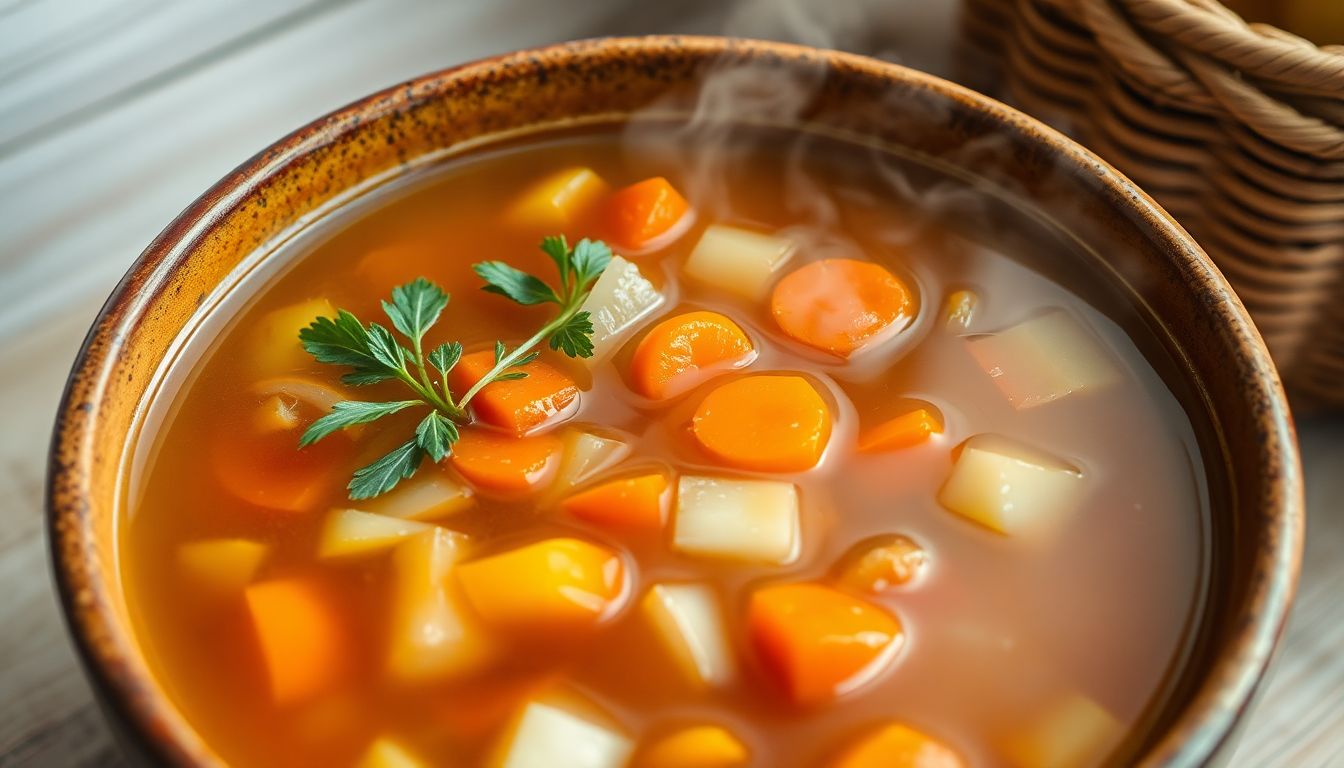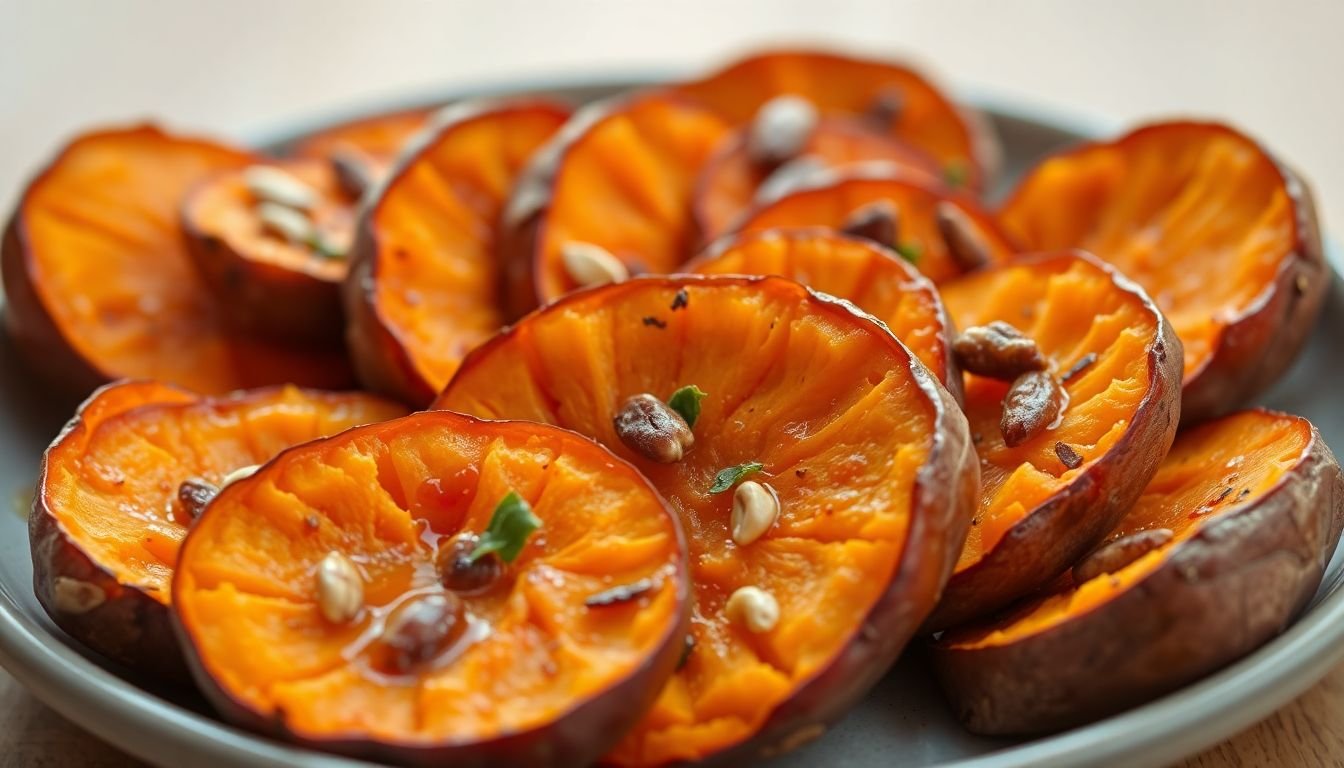Veggie Scrap Broth: Save Money and Flavor

Are you tired of tossing vegetable scraps in the trash each week? It feels like throwing money away, right? Plus, all that waste isn’t great for our planet. The solution? Veggie scrap broth! It’s a simple way to use those scraps, save money, and add amazing flavor to your meals.
Veggie scrap broth is an easy and economical method to reduce food waste. You can enhance your cooking and unlock flavors you never imagined.
Why Make Veggie Scrap Broth? The Benefits Unveiled
Why should you bother making your own veggie scrap broth? Well, let’s dive into the many perks. From saving cash to helping the environment, there’s a lot to love.
Save Money and Reduce Waste
Think about all those carrot peels, onion skins, and celery ends you usually toss. These scraps still contain flavor! Using them for broth means you’re not buying store-bought broth as often. That saves you money. Reducing waste is also smart.
Actionable tip: Keep a container in your freezer. Toss veggie scraps in it as you cook. When it’s full, you’re ready to make broth!
Enhance Flavor in Your Cooking
Store-bought broth can be bland. Homemade veggie scrap broth? It’s packed with flavor. It adds depth to soups, stews, and sauces. Suddenly your recipes are more delicious.
Imagine making a simple tomato soup. Use store-bought broth in one batch. In the other, use your veggie scrap broth. The difference will blow your mind. You will be able to taste the difference. The homemade version has a richness and complexity you just can’t find in a carton.
A Sustainable Choice for an Eco-Friendly Kitchen
Food waste is a huge problem. It ends up in landfills and contributes to greenhouse gas emissions. Making veggie scrap broth is one small step you can take toward a more sustainable kitchen.
Did you know that in the United States, around 30-40% of the food supply is wasted? That’s a lot! By using veggie scraps, you’re helping to reduce that number and do your part for the environment.
What Veggie Scraps Can You Use? A Comprehensive List
Not all veggie scraps are created equal. Some will make your broth taste amazing, others, not so much. Here’s a rundown of what to use and what to avoid.
The Best Veggie Scraps for Broth
These are your broth-making superstars:
- Onion peels (yellow or brown)
- Carrot tops and peels
- Celery ends and leaves
- Mushroom stems
- Garlic skins
- Parsley stems
- Tomato cores and ends
- Bell pepper cores and ends
Actionable Tip: Always wash your scraps thoroughly before using them. Get rid of any dirt.
Veggie Scraps to Avoid
Steer clear of these, as they can make your broth bitter or unpleasant:
- Broccoli stems and leaves
- Cabbage cores and outer leaves
- Brussels sprouts ends
- Overly bitter greens (like kale or collard greens)
- Potato peels (they can make the broth starchy)
Broccoli, for example, can make your broth taste like, well, broccoli. Which might not be what you’re going for. The same goes for cabbage, it can add a strong, sulfurous flavor.
Pro-Tip: Roast Your Scraps!
Want to take your broth to the next level? Roast your veggie scraps before simmering them. Roasting brings out their natural sweetness and intensifies their flavor. Just toss them with a little olive oil and roast in a 400°F (200°C) oven until they’re slightly browned.
How to Make Veggie Scrap Broth: A Step-by-Step Guide
Ready to make your own veggie scrap broth? Here’s how.
Ingredients and Equipment
You’ll need:
- 4-6 cups of veggie scraps
- 8-10 cups of water
- 1-2 bay leaves
- 1 teaspoon of peppercorns
- Optional: fresh herbs like thyme or rosemary
Equipment:
- Large pot or stockpot
- Strainer or cheesecloth
Actionable tip: For an Italian-style broth, add basil and oregano. For an Asian-inspired broth, add ginger and lemongrass.
Step-by-Step Instructions
- Combine veggie scraps, water, bay leaves, and peppercorns in the pot.
- Bring to a boil, then reduce heat and simmer for at least 1 hour. For a richer flavor, simmer for 2-3 hours.
- Remove from heat and let cool slightly.
- Strain the broth through a strainer or cheesecloth. Discard the solids.
- Store the broth in the refrigerator or freezer.
Actionable tip: The longer you simmer the broth, the more intense the flavor will be. Keep an eye on the water level and add more if needed.
Storing and Using Your Veggie Scrap Broth
Now that you’ve made your broth, how do you store it and use it? Let’s explore.
Safe Storage Methods
- Refrigerate: Store in an airtight container for up to 5 days.
- Freeze: Store in freezer-safe containers or bags for up to 3 months.
Actionable tip: Freeze broth in ice cube trays for easy, single-serving portions. These are perfect for adding flavor to sauces or small dishes.
Creative Ways to Use Veggie Scrap Broth
- Soups and Stews: Use it as a base for any soup or stew.
- Sauces: Add it to sauces for extra flavor.
- Grains: Cook rice, quinoa, or other grains in broth instead of water.
- Braising: Use it to braise meats or vegetables.
- Deglazing: Use it to deglaze a pan after cooking meat, creating a flavorful sauce.
Try this simple recipe: Sauté some onions and garlic. Add a cup of veggie scrap broth and a can of diced tomatoes. Simmer for 15 minutes. Season with salt, pepper, and herbs. You’ve got a quick and tasty tomato soup!
Troubleshooting and Tips for Perfect Veggie Scrap Broth
Sometimes things don’t go as planned. Here’s how to fix common broth-making problems.
Common Issues and Solutions
- Broth is too bitter: You may have used too many bitter scraps. Next time, use fewer broccoli stems or cabbage leaves. Try adding a pinch of sugar.
- Broth is too bland: You didn’t use enough scraps or didn’t simmer it long enough. Simmer for longer.
- Broth is cloudy: This is usually harmless. It just means there were some small particles in the broth. Strain it through cheesecloth.
Actionable tip: If your broth is too bland, add a splash of soy sauce or Worcestershire sauce for extra umami.
Flavor Enhancement Tips
- Add dried mushrooms for a rich, earthy flavor.
- Include a piece of kombu (dried seaweed) for umami.
- Add a splash of vinegar or lemon juice for brightness.
- Experiment with different herbs and spices.
Actionable tip: Try a combination of carrots, celery, onion, garlic, thyme, and bay leaf for a classic flavor.
Conclusion
Making veggie scrap broth is a simple yet powerful way to reduce food waste, save money, and add incredible flavor to your cooking. It’s an eco-friendly habit.
So, start saving those veggie scraps! You’ll be amazed at how easy it is to create your own delicious and sustainable broth. What are you waiting for? Your kitchen will thank you. The environment will thank you too.






